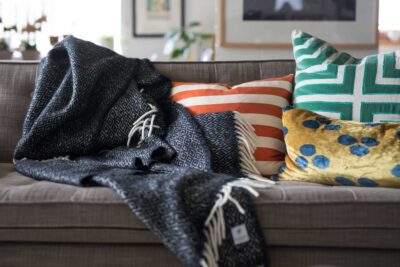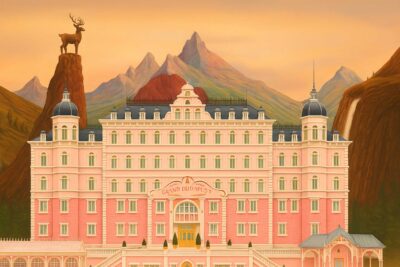Dystopian interior design in movies and the beauty of brutalism
Dystopian interior design movies have become our unexpected muse in home décor.
From neon-lit rain-soaked streets to raw concrete towers, these filmic visions challenge how we think about space.
And here’s the thing, we kind of love it.
Whether we’re binge-watching Black Mirror or revisiting Blade Runner, we’re soaking up ideas for furniture, textures, and color palettes that feel futuristic yet eerily familiar.
In this piece, we’ll explore how dystopian set design—and the beauty of brutalism—can spark fresh inspiration for our own homes.
Let’s dive in.
Exploring Dystopian Film Interiors
We’re drawn to movie worlds that feel just plausible enough to give us goose bumps.
Dystopian interiors tap into our collective anxieties and fantasies, asking us to imagine societies ruled by technology, power, or decay.
Those cinematic sets aren’t just backdrops, they’re storytelling engines.
Each detail—from a sand-blasted wall to a flickering hologram—invites us to think about what home really means.
And if you’ve ever browsed our movie interior inspiration gallery, you know we can’t resist a design moment that feels cinematic and raw.
Understanding Brutalist Architecture
Brutalism is often dismissed as cold or oppressive, but we see its quiet power.
Exposed concrete, geometric forms, and monumental scale create spaces that feel honest—no gloss, no pretense.
That unfiltered aesthetic translates well to a cozy loft or urban townhouse when balanced with warm accents.
Here’s what makes brutalist design compelling:
- Material Truth: Unfinished surfaces reveal the soul of a structure.
- Sculptural Forms: Bold shapes define sightlines and movement.
- Functional Beauty: Every element serves a purpose, even when it looks artful.
Once we embrace those principles, we can soften them with textiles, greenery, or custom lighting to keep things livable.
Showcasing Iconic Movie Examples
We’ve rounded up some dystopian classics to spark your imagination. Each one offers a lesson in atmosphere, color, and texture.
| Film | Key Elements | Color Palette |
|---|---|---|
| A Clockwork Orange (1971) | Stark minimalism, brutalist lecture halls, sterile spatial control | White, black, warm wood tones, high contrast |
| Blade Runner (1982, 2049) | Neo-noir neon, bleak Brutalist interiors | Neon magenta, deep purple, sand-blasted neutrals [1][2] |
| The Matrix (1999) | High-tech minimalism, green code motif | Neon green, charcoal gray, black [2] |
| Alien (1979) | Clinical white labs, endless dark corridors | White, black, neon green, teal [2] |
| Dune (2021) | Elegant desert dwellings, aristocratic accents | Dusty beiges, warm golds, rich burgundy [2] |
| The Fifth Element (1997) | Futuristic kitsch, bold color blocking | Yellow, orange, black, white [2] |
| Black Mirror (Various Episodes) | Hyperminimal pods, pastel dystopia, mirrored halls | White, pastels, reflective surfaces [3] |
| High-Rise (2015) | Modular brutalist interiors, descent into chaos | Concrete gray, muted blues, rust accents |
| Gattaca (1997) | Sleek modernism, genetic perfection, corporate coldness | Cool grays, metallics, surgical whites |
| Minority Report (2002) | Technocratic interiors, hyper-targeted minimalism | Glass, silver, deep blue hues |
| Snowpiercer (2013) | Train car hierarchy, compartmentalized interiors | Industrial gray, iron, cold lighting tones |
Blade Runner’s Contrasting Worlds
In Blade Runner, opulent penthouses sit above rain-soaked slums.
We see pristine whites and polished metals for the elite, and cramped, cluttered quarters for everyone else (Design Defender).
That contrast teaches us how to layer luxury and grit in a single space.
Black Mirror’s Unsettling Designs
Episodes like “Nosedive” drape interiors in pastels that feel oddly sweet and suffocating.
In “White Christmas,” hyperminimal white rooms underscore isolation and detachment (Architectural Digest).
We can borrow those cues to create tension in our own decor—think a single bold accent in a sea of neutrals.
A Clockwork Orange’s Cold Control
Stanley Kubrick’s A Clockwork Orange reimagines interior space as a psychological battleground. The Tavy Bridge Centre and Brunel University’s stark lecture halls double as scenes of oppression, their brutalist lines and sterile geometry turning environment into enforcer.
The film’s interiors aren’t just minimalist—they’re weaponized. Everything is exaggerated: oversized furniture, unnatural color pops, and symmetrical corridors that feel designed to trap rather than inspire.
It’s a masterclass in using space to make us uneasy. And it leaves us wondering—how much of our own interior design is shaped by control, rather than comfort?
More Dystopian Design Icons
Beyond the usual suspects, a few films and series stand out for how they translate dystopian narratives into architectural expression.
In High-Rise, modular living turns chaotic, mirroring social collapse.
Gattaca elevates minimalist interiors to echo its obsession with genetic perfection.
Each world shows how even the coldest design can carry deep emotional weight—if we pay attention to the cues.
Translating Dystopian Style Home
We’re not setting up a mad scientist’s lair.
We’re translating cinematic ideas into warm, functional spaces.
Embracing Raw Materials
- Exposed Concrete: Introduce a single wall or fireplace surround in honed cement.
- Metal Accents: Think black steel shelving, iron light fixtures, or a brushed aluminum coffee table.
- Natural Stone: A honed basalt countertop or soapstone sink adds tactility.
Crafting a Cinematic Palette
- Moody Neons in Moderation: A neon sign or tinted glass panel can feel futuristic without overpowering.
- Deep Jewel Accents: Teal cushions or plum velvet chairs bring richness to neutral foundations.
- Desert Neutrals: Sandy beiges and warm taupes anchor the mood in a subtle way.
Choosing Statement Furniture
Our favorites from the screen—like the Ribbon Armchair or Argyle Chair—can become focal points (Design Defender).
Balance those sculptural seats with simpler pieces so the room doesn’t feel like a set.
Avoiding Design Overkill
It’s easy to go full sci-fi and end up with a cold, impersonal space.
Here’s how we keep things inviting:
- Don’t Theme Too Hard: One or two dystopian nods is plenty.
- Layer Textures: Soft rugs, woven throws, and rattan baskets soften hard edges.
- Honor Real Life: Leave room for books, plants, and everyday mess.
Telling Our Unique Story
What we love about dystopian interior design movies is how they push boundaries.
They remind us that spaces can provoke feeling, not just serve function.
So when we bring those cinematic notes home, we’re not copying a trend.
We’re creating a space that speaks to our own narrative—one where brutalism meets cozy, where future meets now.
Let’s tell that story, together.
Ready to explore more design mash-ups?
Check out our take on pop culture interior design for fresh inspiration.
KŌŌI / KŌŌI Magazine / Home Decor and Inspirations / Pop Culture Interiors / Dystopian interior design in movies and the beauty of brutalism

Alex Carter
Still hungry? Here’s more

How to Style Throw Pillows and Blankets Together: A Complete Guide
Learn how to style throw pillows and blankets together for a cozy, modern living space you’ll love!

How to Put a Throw on a Sofa: Expert Styling Tips
Discover expert tips on how to put a throw on a sofa with stylish techniques for a cozy, modern look!

Wes Anderson interior design symmetry color and storytelling
Discover Wes Anderson’s enchanting interior design: where symmetry, color, and storytelling collide in home décor magic.

Japandi Bedroom: Designing Your Minimalist Sanctuary for Better Sleep
Transform your space with a Japandi bedroom for better sleep and a serene, minimalist vibe!

What Size Recessed Lights Should I Use?
Wondering what size recessed lights should I use? Learn tips to brighten your home beautifully!

Throw Blanket Size Guide: The Perfect Fit for Comfort and Style
Find the perfect throw blanket size with our guide! Compare standard throw blanket size for U.S., UK, Europe, and more.

 Home Accessories
Home Accessories Furniture
Furniture
3 thoughts on “Dystopian interior design in movies and the beauty of brutalism”